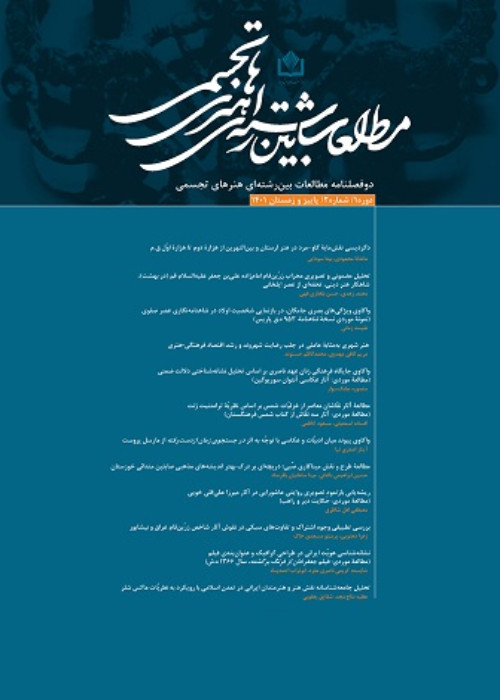A comparative study of commonalities and stylistic differences in the motifs of the lustre ware of Iraq and Neishabur
Lustre glaze was a novel invention by the artists of the Islamic era, which was used for gold and silver metals. In the course of its development, this pottery went through three periods, among which the beginning period and the middle period for change are of special importance. The country of Iraq was one of the most important production centers of lustre ware at the beginning of Islam, and by exporting this type of pottery, it played an important role in spreading this type of technique. The fall of the Abbasids and the migration of artists to other Islamic lands has caused the amalgamation of the Abbasid and native styles. Neishabur, as one of the centers of lustre ware production in the early period, despite being influenced by the Abbasid style, has also had differences in the style of drawing motifs. This research intends to analyze 16 examples of the typical vessels of lustre ware Iraq and Neishabur, to categorize the patterns, themes and stylistic differences of these two centers and to answer these questions: the motifs used in the lustre ware of Iraq and What themes does Neishabur include? The information and data of the study in this research have been collected using library sources and then analyzed by descriptive-analytical method. The results of the research indicate this Scenes such as playing an instrument, the use of eye and dotted motifs in the background, teardrop and circular motifs on the back of the dish, the use of birds, especially pigeons, which are conjugated or accompanied by a leaf on the beak, are among the things that are used in a comparative manner in the pottery of the two centers. but despite these common motifs, differences such as the style of drawing human motifs, including curly hair, big eyes, have distinguished them from Iraqi lustreware vessels. In addition to this, the animal motifs of lustreware Iraq and Neishabur are completely influenced by the ecology of these regions, for example, we can mention the pattern of camels and fish-eating chickens, which in Neishabur examples include other motifs such as cows, pigeons and lions as Iranian symbols. which has been used since before Islam. The widespread use of inscriptions is one of the factors that shows the obvious difference between the lustre ware of Iraq and Neishabur. The inscriptions of Neyshabur vessels, which are often seen on the edge, include hadiths and Quranic verses, which are also used frequently in the lustre ware of this region, and it indicates the local style of this period, while Iraqi gold often has court concepts and inscriptions are rarely used. And it is usually used on the bottom of dishes. Therefore, the special features that can be seen in each of the golden dishes of Iraq and Neishabour are indicative of a special and local style that, in addition to influencing each other, has also made them different from each other.
- حق عضویت دریافتی صرف حمایت از نشریات عضو و نگهداری، تکمیل و توسعه مگیران میشود.
- پرداخت حق اشتراک و دانلود مقالات اجازه بازنشر آن در سایر رسانههای چاپی و دیجیتال را به کاربر نمیدهد.


